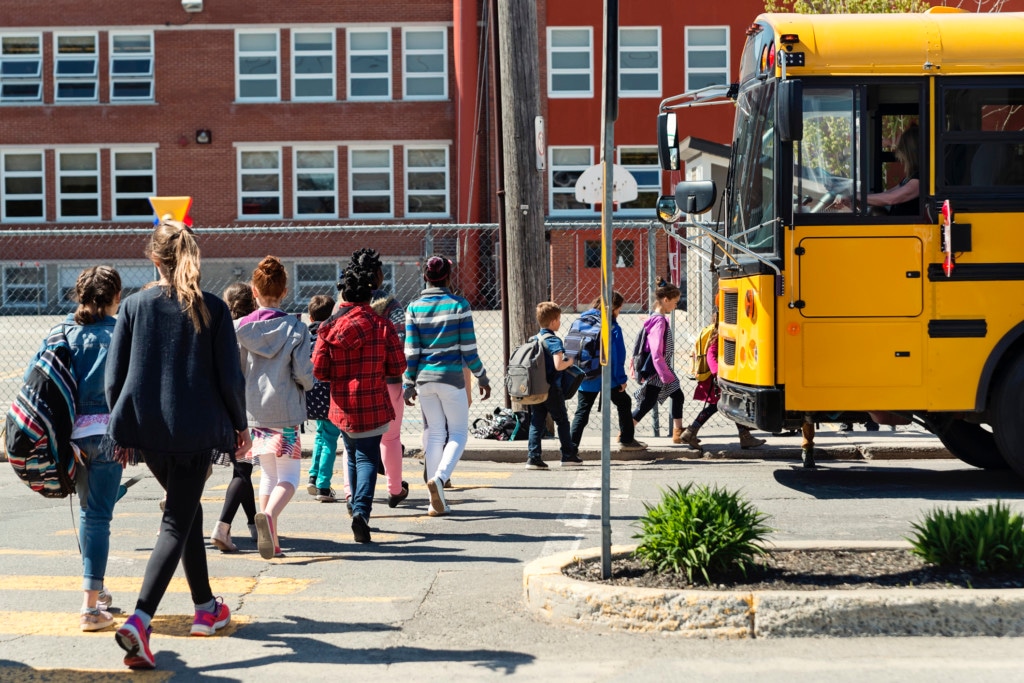You are viewing our site as an Agent, Switch Your View:
Agent | Broker Reset Filters to Default Back to ListHow School Ratings Can Affect Home Values and Prices
August 24 2022
 New buyers tend to approach the house hunting process with a lengthy list of demands to suit their many needs. Those with kids, along with those planning on having them in the future, prioritize clean, safe neighborhoods that are suitable for raising a family.
New buyers tend to approach the house hunting process with a lengthy list of demands to suit their many needs. Those with kids, along with those planning on having them in the future, prioritize clean, safe neighborhoods that are suitable for raising a family.
This fraction of buyers will likely take schooling options into account, as well, when preparing to move into a new community. Education drives many buyers' financial decisions, and thus has an enormous impact on the residential real estate market.
Properties in ideal locations (i.e., within walking or short driving distance to good schools) often see price spikes in order to offset high demand, which can be unfavorable for low- and middle-income families, but beneficial for a school district's local economy.
In other words, increased home values have their positives and negatives. Let's break down why:
Education as a Factor in the Search for Homes
According to the National Association of Realtors' 2022 Home Buyers and Sellers Generational Trends Report, roughly 31% of surveyed home buyers across all generations over the past year moved with at least one child under the age of 18. Comparably, 23% of surveyed buyers spanning all generations selected school district quality as a factor that influenced their choice in neighborhoods. About 20% of buyers selected convenience to schools as an influencing factor.
Naturally, buyers with younger children will take education into account when searching for new homes. So, in response, sellers also consider education when pricing their homes and putting them on the market.
However, buyers with no kids also take advantage of highly ranked school districts because they intend to start families in the future or simply want to benefit from the community-wide privileges that good educational programs have to offer.
Studies have theorized that more competitive and well-funded options for K-12 education have a more positive effect on the communities that surround them. One particular study by RAND Education claimed that higher-quality school districts impact both local and larger communities in many positive ways: they can lead to lower crime rates, increased property taxes, and increased civic participation, which can be proven by election turnout, participation in cultural events, and improved news literacy.
Proximity to Good Schools Is a Plus
 Since parents typically want to send their kids to high-quality schools, buyers with children tend to focus on properties within good school districts that also have relatively short walking or driving commutes.
Since parents typically want to send their kids to high-quality schools, buyers with children tend to focus on properties within good school districts that also have relatively short walking or driving commutes.
So, what characteristics define a "good" school?
Such schools are usually academically rigorous, maintain high attendance and graduation rates, generate high standardized test scores, offer low student-teacher ratios, and provide an onslaught of extracurricular activities for students to get involved in after class.
GreatSchools, a nonprofit organization that rates and reviews pre-K to 12 schools using data from the Office of Civil Rights, also takes equity into account when analyzing learning environments for both students and teachers. GreatSchools values racial and socioeconomic diversity in student bodies, scoring more diverse and inclusive schools higher than schools leaning more homogenous. GreatSchools also considers teacher experience, student progress, and the variety of classes and programs offered, usually as electives.
Lower-Income Families Tend to Be Priced Out of Strong School Districts
Because the demand for housing is so strong in neighborhoods with competitive school districts, home prices and values in these areas can skyrocket, pricing out families with low, or even average, household incomes. The RAND study also states that the quality of a school district is "positively associated" with increased housing values, as parents are willing to pay more money to ensure their kids receive better education.
This exclusion of poorer families furthers the divide between socioeconomic classes, creating a correlation between class and educational attainment.
Affordable homes tend to fall within school districts with lower standardized test scores, fewer extracurricular activity options for students, and less funding from outside sources, including local government. The communities surrounding these homes also tend to lack economic stability, or even grow financially decrepit, due to the underperforming school districts that serve them.
Competitive schools tend to attract wealthy residents who are capable of investing more money into their children's education, which, in turn, leads to flourishing local economies that further benefit these schools.
And, by challenging their student bodies academically, these schools prepare their youth (and their communities) for economic success, equipping them with the skills they need to succeed in college and the workforce in the future. As the academic achievement and wealth gaps widen to new extremes, school ratings are becoming an increasingly important factor in home buyers' search criteria.
To view the original article, visit the Homes.com blog.









